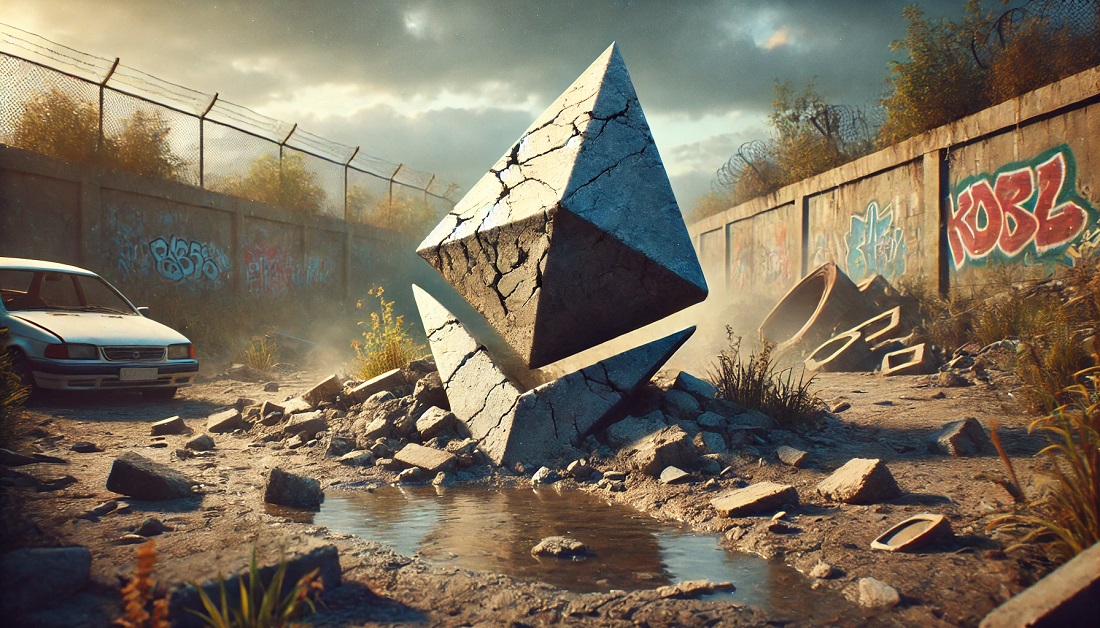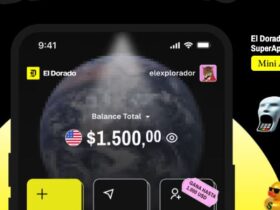Ethereum is not going through its best moment, at least in terms of popularity.
The network co-created by Vitalik Buterin, who was the undisputed leader within the niche «Turing complete» from 2017 until the bull cycle of 2020-2021, now sees its reign threatened by networks like Solana or Sui, and even by Ethereum layers 2 (L2) like Base, Arbitrum and Optimism.
Is Ethereum’s cryptocurrency ether (ETH) still a good investment? Or is your future inevitably headed towards failure?
Opinions on this matter are diverse. On this occasion, will analyze a negative outlookwhich was published on the social network X by the investor who identifies himself under the pseudonym “Duo Nine.”
But, before continuing, a request for you, the reader (especially if you are an Ethereum fan): read the note from start to finish. Don’t slam the door in the middle of the text, because things, as we will see later, may not be as negative or absolute as Duo Nine makes them out to be.
This analyst says: “If you have Ethereum, you are in trouble”. Obviously Duo Nine for ease of understanding says “Ethereum” (name of the network) when what it should say is “ether” or “ETH” (name of the cryptocurrency).
To justify its statement, Duo Nine mentions that “Uniswap, an Ethereum dApp generating $500 million a year,” has just created its own L2.
As CriptoNoticias reported last week, the decentralized exchange Uniswap announced that it will launch Unichain, its own network. That could be detrimental to Vitalik Buterin’s network because now the commissions will not go to the Ethereum validator nodes, but to those of Unichain.
Duo Nine then makes a prediction, perhaps a bit exaggerated, but whose central idea may be valid: “Multiply this by 100 with other dApps and the price of ETH will drop to zero.”
The investor expands his explanation while launching more catastrophic predictions about Ethereum:
“The reason Ethereum has value is due to its fees that generate demand for its native token. At the time of this post, a simple token swap costs more than $10. “ETH is on borrowed time as users are rightfully abandoning this expensive chain.”
Duo Nine, investor and influencer.
For Duo Nine, even the proliferation of second layer networks is detrimental to Ethereum or, at least, for the ETH price. He says Vitalik Buterin and his team “decided to scale Ethereum via L2, but, in the process, they are losing their users.” According to the investor, this “is a bit ironic considering that L2s were intended to solve Ethereum’s scalability problem.”
Duo Nine explains their argument by saying: “Who will pay for Ethereum security? Because the L2s surely won’t do it.

In the future, the Ethereum critical influencer projects that the situation will be worse. “The next step is chain abstraction,” he says. By this he means that technological evolution will probably allow users to interact directly with dApps, without needing to know the networks that are used in the background. So, dApps that provide the best user experience (which translates into faster and cheaper transactions) They will be the ones who succeed. That would be another hard blow for Ethereum.
As an example, he mentions Solana, a network whose operation has been paused on numerous occasions due to technical problems, but its users continue to choose it:
“Solana basically showed that users don’t care about the technical aspects. The future will be about dApps, not networks. With a single click, the app takes care of fees, bridging and cross-chain movements. Networks that cost as much to use as Ethereum won’t stand a chance. Because? Because dApps like Uniswap won’t use them anymore – that’s the alpha phase! By default, the app will use your string and send users there. Multiply that with all the decentralized applications in DeFi and you will see where this is going. Ethereum users will not appear anywhere because ETH is not an application.
Duo Nine, investor and influencer.
The bearish thesis continues with an explanation that “Ethereum is infrastructure” and, according to him, “infrastructure is obsolete, if we are honest”. According to Duo Nine, “we are entering a new phase, where apps and (meme) tokens will dominate.”
For him, “mass adoption does not care about technical jargon, L1, L2, Byzantine failures or the like.” Instead, he explains, “users want elegant apps to gamble with tokens, that’s all. Ideally, without commissions.
By way of conclusion, Duo Nine establishes a difference between bitcoin (BTC) and ether. He explains that “bitcoin is not infrastructure, but it is money.” Therefore, bitcoin “does not compete with dApps or other networks and does not have the problem of Ethereum.” He assures that it is for this reason that bitcoin ETFs register millions of dollars in inflows while ether ETFs are in negative numbers.
The true, the questionable and the false of this analysis on Ethereum
It cannot be denied that what Duo Nine said must be considered. After all, ether is the second largest cryptocurrency by market capitalization. Is it really doomed to failure? Will it really be replaced by other networks that provide a more comfortable user experience?
1. The truth: Ethereum faces challenges, but it’s not in insurmountable trouble
It is true that Ethereum faces competition from other L2 networks and solutions. The rise of platforms like Solana and L2 solutions, like Base and Optimism, challenge their reign, as CriptoNoticias has highlighted in previous publications.
This is natural in a technological environment as competitive as that of cryptocurrencies. Furthermore, Ethereum remains a complex infrastructure, and its high demand has led to a cost problem for using the network, which has caused a flight of users to cheaper and faster solutions.
Duo Nine is right to point out that many of the L2 networks are designed to improve Ethereum’s scalability and reduce costs, and that this could divert direct activity from the mainnet.
2. The questionable: “Ethereum will lose users due to L2 and its value will fall”
However, the idea that “Ethereum is in trouble” is an exaggeration. Although L2s like Uniswap are gaining ground, anyone who knows how L2 works the rollupsyou know that settle their transactions on the Ethereum main networkwhich continues to generate demand for ETH to secure the network. This is essential because it maintains the need for fees in Ethereum for security and consensus.
Duo Nine points out that L2s are driving users away from the Ethereum mainnet, but this is not as serious a problem as he makes it out to be.
Instead of seeing L2s as a threat, it can be argued that they are a natural extension of Ethereum and part of its evolution. As explained in the previous point, the rollups (Optimistic and ZK) continue to post their transactions on Ethereum, which generates activity on the main network, ensuring that validators continue to receive commissions.
Furthermore, Ethereum not only benefits from direct use on the mainnet, but also from the ecosystem of smart contracts that are built on top of it. The growth of L2 could, in fact, increase activity on Ethereum rather than decrease it. Users who adopt L2 still need ETH to interact with the mainnet, which maintains its demand.

3. The false: “Ethereum’s infrastructure is obsolete and has no future”
The “Ethereum is obsolete infrastructure” argument ignores several important developments. Ethereum continues to innovate to keep up with scalability and efficiency needs, and its ability to adapt cannot be underestimated.
Besides, It is not true that “the infrastructure is obsolete” simply because the average user does not interact with it. Ethereum provides the backbone upon which many dApps and decentralized financial services are built. Infrastructure solutions are often in the background for the end user, but remain essential to the functioning of the ecosystem. For example, people do not interact with TCP/IP, nor do they know that they are using it, but that layer of the Internet protocol is essential for its operation.
Matt Hougan, CEO of Bitwise, dismisses the idea that Ethereum is an old or obsolete technology. This businessman has said: “Ethereum is the Microsoft of blockchains.” Hougan believes that Ethereum will remain relevant despite the passing of the years.
Finally, we will say that the market values history. Ethereum stands out for having remained the leading network in smart contracts for years. Despite the current challenges, Ethereum is not an ossified or stagnant project. On the contrary, it continues to develop to adapt to changing market needs and offer a better user experience.
Historically, the market has witnessed numerous attempts to launch «Ethereum killer” either “Bitcoin killer«. However, most of these projects have failed to overthrow the more established networks. There is a significant sector of investors that values traditional and time-tested. For them, Ethereum remains the most reliable option within the smart contract ecosystem, due to its track record and the magnitude of its adoption.
And to all this the network effect must be added. Most of the capital and most of the developers are in Ethereum. The market values this and understands that there are reasons why money has moved mainly towards that network.
Thus, although narratives around new projects may capture attention in the short term, many long-term investors prefer to bet on what has been proven to work. Ethereum is positioned as an attractive option precisely because of its stability and flexibility to continue improving, which ensures that it will not lose relevance compared to other emerging networks.
Disclaimer: The views and opinions expressed in this article belong to its author and do not necessarily reflect those of CriptoNoticias. The author’s opinion is for informational purposes and under no circumstances constitutes an investment recommendation or financial advice.






Leave a Reply